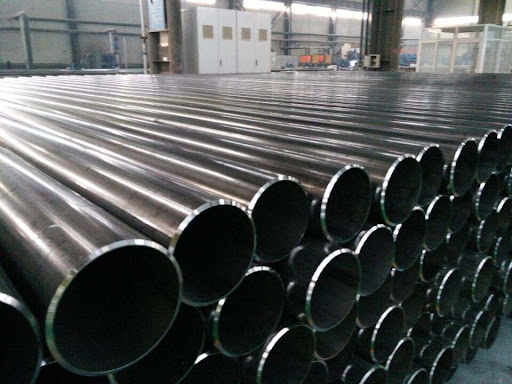Galvanized Pipe Price
The price of galvanized pipe is determined according to the steel price increases determined by the pipe manufacturing companies.
Galvanized Coating, Raw Material and Affecting Factors
Galvanized pipes are steel pipes treated with a zinc coating that provides superior protection against corrosion. This coating process is called “galvanizing” and refers to coating with zinc. The intensity of the galvanizing process is measured by the amount of zinc used per square meter (g).
Factors Affecting Galvanized Pipe Price:
- Raw Material Prices: The most important determinant of galvanized pipe prices is the price fluctuations of raw materials such as zinc and steel. Increases in zinc and steel prices also cause an increase in galvanized pipe prices.
- Coating Thickness: The amount of zinc used in the galvanizing process affects the pipe’s resistance to corrosion and therefore its price. Pipes with thicker coatings last longer and are priced higher.
- Pipe Size and Wall Thickness: The diameter and wall thickness of the pipe also play a determining role on the price. Pipes with larger diameters and thicker walls are more expensive because they require more raw materials and galvanizing processes.
- Production Costs: Production and labor costs are also among the factors affecting galvanized pipe prices.
- Demand and Supply: Changes in the balance of demand and supply of galvanized pipes can also cause fluctuations in prices.
| Galvanized Pipe Price List | ||||||||
| Size(mm) | Thickness (mm) usd / mt |
|||||||
| 2,00 | 2,50 | 3,00 | ||||||
| 21,3 | 63,50 | |||||||
| 26,9 | 80,00 | 90,46 | 106,08 | |||||
| 33,7 | 97,19 | 113,67 | 133,78 | |||||
| 42,4 | 122,89 | 140,79 | 166,60 | |||||
| 48,3 | 137,53 | 158,69 | 187,10 | |||||
| 60,3 | 173,54 | 198,06 | 235,37 | |||||
| 76,1 | 251,64 | 300,45 | ||||||
| 88,9 | 307,17 | 367,70 | ||||||
| 114,3 | 482,67 | |||||||
What is the difference between Galvanized Pipe and Stainless Pipe?
Galvanized pipe and stainless pipe are both durable and long-lasting pipe types. There are some important differences between them:
Material:
- Galvanized pipe: Made from carbon steel and coated with zinc. This coating protects the pipe from corrosion.
- Stainless pipe: Manufactured from an alloy containing elements such as nickel, chromium, and molybdenum. This alloy makes the pipe naturally resistant to corrosion.
Durability:
- Galvanized pipe: The galvanized coating protects the pipe from corrosion, but if it is scratched or worn, it can begin to rust.
- Stainless pipe: Stainless steel alloy makes the pipe inherently resistant to corrosion. It will not rust even if scratched or worn.
Price:
- Galvanized pipe: It is cheaper than stainless pipe.
- Stainless pipe: More expensive than galvanized pipe.
Usage areas:
- Galvanized pipe: Used in plumbing, electrical wiring, fence and railing construction.
- Stainless pipe: Used in food and chemical installations, medical equipment, kitchen and bathroom appliances.
In summary:
- Galvanized pipe: Cheaper, but less resistant to scratches and wear.
- Stainless pipe: More expensive, but more durable and long-lasting.
When choosing which type of pipe is right for you, it’s important to consider your intended use, your budget, and your durability requirements.
Additional Information:
- The lifespan of galvanized pipes depends on the thickness of the zinc coating and environmental conditions.
- The lifespan of stainless pipes depends on the type of alloy used.
- Both types of pipes are available in different sizes and thicknesses.
Galvanized Pipe Coating Thicknesses
Galvanized pipe coating thicknesses are determined according to the intended use of the pipe and the environmental conditions it will be exposed to. In the TS EN ISO 1461 standard, 5 classes are specified for the thickness of the galvanized coating:
| Sınıf | Coated Thickness (µm) | Area of Use |
|---|---|---|
| A | 80-120 | Pipes exposed to atmospheric conditions |
| B | 60-80 | Pipes used in less corrosive environments |
| C | 40-60 | Pipes used in indoor environments |
| D | 25-40 | Pipes used in slightly corrosive environments |
| E | 10-25 | Pipes used in very mildly corrosive environments |
Some general information for galvanized pipe coating thicknesses:
- In coatings made by hot dip galvanizing method, the coating thickness varies between 50-150 µm.
- In coatings made by electrolytic galvanizing method, the coating thickness varies between 5-20 µm.
- As the diameter of the pipe increases, the coating thickness also increases.
- Thicker coating is preferred for pipes used in more corrosive environments.
You can use the following formula to calculate the weight of galvanized pipe:
Weight = (Pipe diameter – Wall thickness) x Wall thickness x 7.85 x (1 + Galvanized coating thickness / Pipe diameter)
For example:
To calculate the weight of a galvanized pipe with a diameter of 32 mm, a wall thickness of 3.2 mm and a galvanized coating thickness of 80 μm:
Weight = (32 – 3.2) x 3.2 x 7.85 x (1 + 80 / 32) = 3.63 kg/m
Galvanized pipe price, 6 meters, 3mm, 4mm, water, natural gas, stainless, 1.5 fingers, 1 finger, greenhouse, iron, 2 inches, 60, half, painted, dimensions, weights, calculation, prices, metal, steel, istanbul, Bursa, Ankara, İzmir, Çanakkale, Eskişehir, Kütahya, Ordu, Samsun, Artvin
